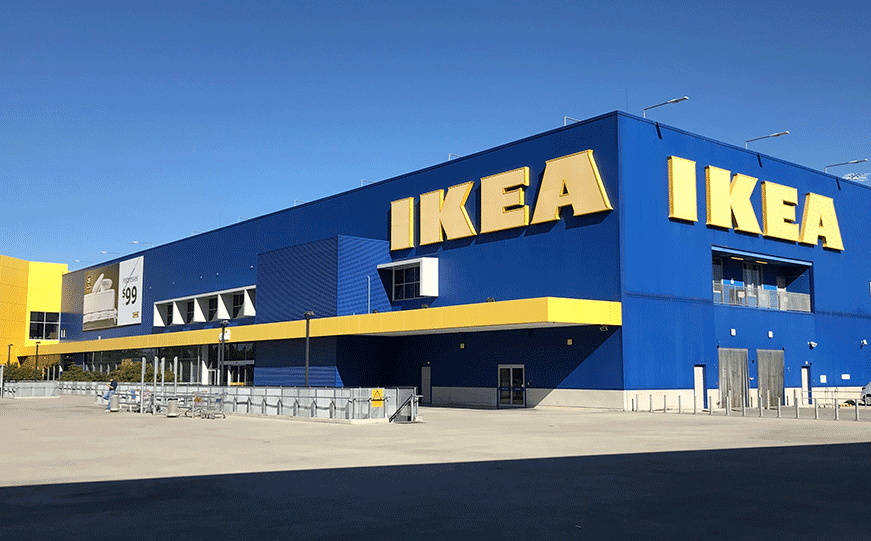For decades, the makers of home, kitchen and bath products have taken two predictable paths when marketing their products to consumers – the “dependable approach,” in which a company tells a potential consumer how strong/tough/reliable/enduring/weather-tested their product is…
…and the “lifestyle approach,” where a company tells the consumer how stylish/chic/complementary a product is to their particular lifestyle and preferences.
The common thread between those two approaches (and, the one that tends to fall flat on younger adult consumers) is that the brand is telling the consumer how to feel.
Rather than inviting them to experience the products and make their own judgments.
Gen-Zers (born after 1996) have had the Internet at their fingertips for their entire adult lives. Almost anything they want to know or learn about is a quick Google search or Alexa command away. As such, these consumers tend to value experiential marketing above brand promises. Gen-Zers – who presently account for 40 percent of all consumers – want to know what values a company stands for and have the opportunity to experience the products for themselves.

IKEA, the furniture, kitchen appliance and home accessory superstore, has done a great job of tapping into the Gen Z need to be inspired by and directly involved in the marketing experience. Here are three recent IKEA marketing campaigns that show how the company is dialed into this growing consumer market.
‘Stuff Monster’ Drives Home a Powerful Message
IKEA’s Stuff Monster campaign is unique in that it doesn’t sell any one IKEA product, but rather the idea that IKEA is committed to sustainability. In the ad, a large Transformer-like monster (conveniently made of IKEA products) roams through a residential neighborhood. To lighten its load, the monster drops off parts of itself (pieces of furniture) at various doorsteps, finding new homes for items that may have otherwise been thrown away.
At the end of the commercial, we see that the face of what once appeared to be a hulking monster is actually a convenient pile of used goods made available to neighbors, free of cost. The campaign effectively pulls at Gen Z heartstrings while reminding them to “reuse and repurpose.”
Young adult consumers are on the front lines of climate change and often choose brands that are eco-friendly and socially responsible. While the IKEA ad falls short of directing consumers to any kind of company web page talking about the company’s commitment to sustainability, the company puts the idea out there. What is absent is the ‘hard sell.’ Rather than push a particular product, the ad shows consumers what kind of company IKEA is and invites them to learn more for themselves.
A Small Footprint with Big Shoes to Fill
IKEA stores are known for being BIG and taking up a lot of space – many demand their own highway exit with coordinating signage. For example, the Burbank, California IKEA has 1,700 parking spaces to accommodate the many people driving up to haul away their unassembled furniture.
A new concept store in Vienna, Austria is bucking this trend by eliminating parking spaces altogether in an effort to attract younger, more pedestrian consumers. The store, set to open in 2021, is located near one of the city’s major subway stations and will focus on accommodating shoppers who walk or bike rather than drive. Shoppers will be able to walk out with some items in hand. However, products too large to carry home will be delivered to their doorstep within 24 hours.
If successful, these smaller-format stores could be employed in numerous dense, urban areas where younger consumers tend to gather and live – offering a more intimate and interactive shopping experience than found in traditional warehouse-style IKEA stores. Case in point – a new IKEA store about a third of the size of a traditional IKEA store is scheduled to open this summer in New York City’s Queens Borough. Consumers will be able to purchase items in store, but will also be able to opt for delivery.
A Sleep at the Disco
In honor of World Sleep Day, IKEA Brooklyn (New York) and IKEA Costa Mesa (California) will be opening their showrooms to lucky customers for a night filled of sleep-themed activities, followed by an actual in-store sleepover. These customers will be treated to an “Insomniac Lounge” featuring ASMR (autonomous sensory meridian response) experiences, a ‘silent disco’ and sleep-related workshops.
We can’t think of a better ‘try-before-you-buy’ promotion than a full-on slumber party in a furniture store. This bold experiment gives customers a chance to create their own unique shopping experience – a key to winning the support of Gen Z consumers who, more often than not, read online product reviews before they commit to a purchase. Offering a fun, interactive experience also encourages participants to develop a deeper affinity and emotional connection toward the IKEA brand and its products – a winning strategy for everyone involved.
The Human Touch
Home and building product brands – some of which are steeped in more traditional sales models – often struggle to bring in Gen Z customers. By finding ways to humanize their brand, and create experiences that leave lasting, positive brand impressions, companies can create enduring loyalty that will last for (the) generations to come.




